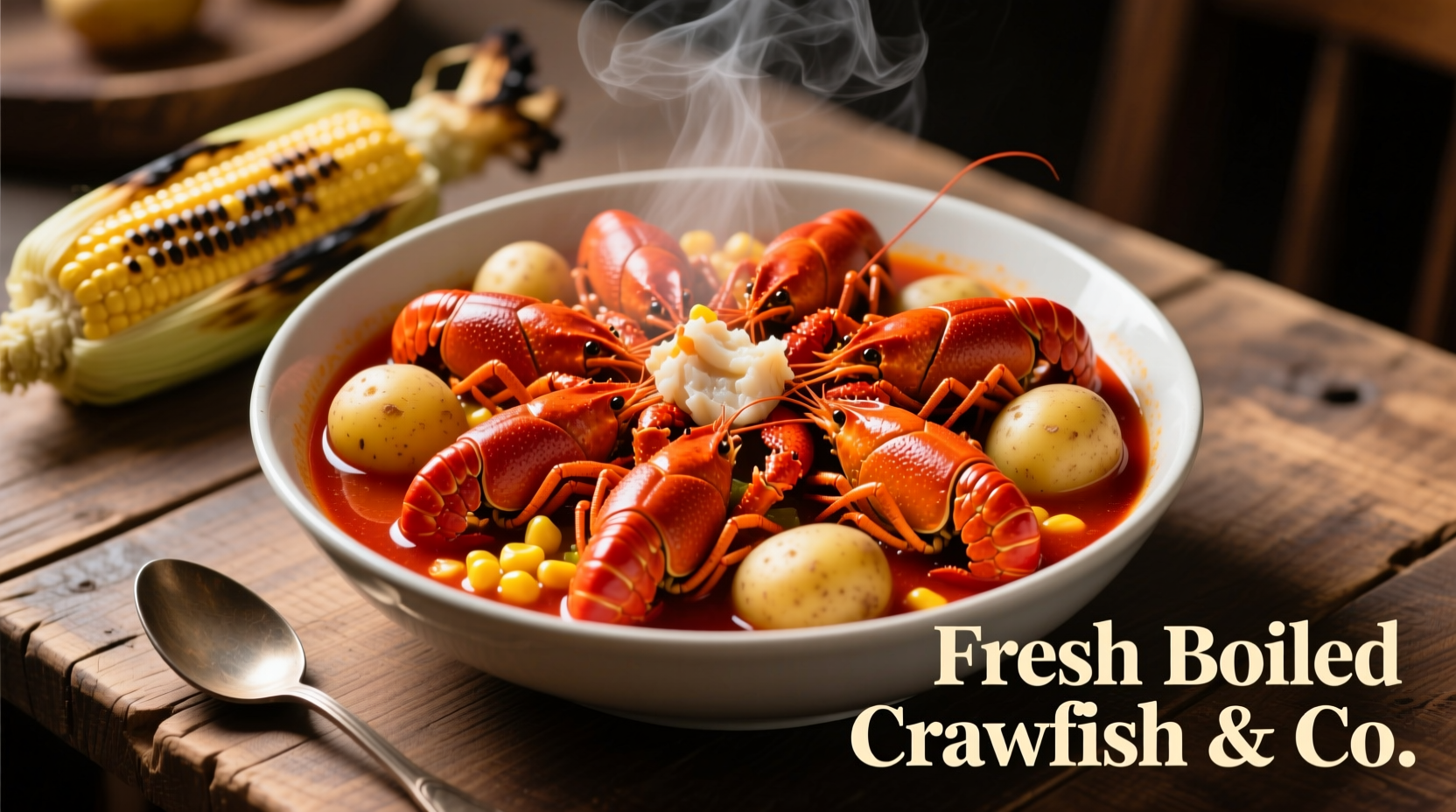When you bite into a perfectly cooked crawfish tail, you're experiencing one of nature's most refined seafood flavors. These freshwater crustaceans offer a culinary experience that's both familiar and uniquely their own, making them a prized ingredient in regional cuisines across the American South and beyond.
What Exactly Are Crawfish?
Crawfish (also called crayfish, crawdads, or mudbugs) are freshwater crustaceans that resemble miniature lobsters. With over 500 species worldwide, the red swamp crawfish (Procambarus clarkii) and white river crawfish (Procambarus acutus) dominate commercial harvesting in the United States, particularly in Louisiana which produces about 90% of the nation's supply according to the National Marine Fisheries Service.
Breaking Down the Crawfish Flavor Profile
The distinctive taste of crawfish comes from several key components working in harmony:
- Sweetness - A clean, subtle sweetness that's less pronounced than shrimp but more delicate than lobster
- Brininess - A mild ocean-like quality despite being freshwater creatures
- Mineral notes - Earthy undertones reflecting their natural habitat
- Clean finish - Absence of strong "fishy" flavors when properly handled
"Crawfish have what we call a 'blank canvas' quality," explains Maya Gonzalez, Latin American cuisine specialist. "Their mild flavor readily absorbs surrounding seasonings while maintaining their own delicate character. This makes them incredibly versatile in everything from simple boiled preparations to complex sauces." 
Crawfish Texture: More Than Just Flavor
Texture plays an equally important role in the crawfish experience. Properly cooked crawfish tails should be:
- Firm but yielding to the bite
- Slightly springy (not rubbery)
- Moist without being mushy
- Easy to separate from the shell when boiled correctly
Overcooking is the most common mistake that transforms tender crawfish into tough, chewy morsels. The ideal cooking time is 2-3 minutes after the water returns to a boil, followed by 15-20 minutes of steeping in the seasoned liquid.
How Crawfish Compare to Other Seafood
| Seafood | Flavor Profile | Texture | Best Preparation Methods |
|---|---|---|---|
| Crawfish | Mild sweetness with mineral notes, clean finish | Tender yet firm, slightly springy | Boiled, étouffée, bisque, fried |
| Lobster | Richer, more pronounced sweetness | Firm, meatier, more substantial | Steamed, grilled, in salads |
| Shrimp | Bolder, more distinctly briny | Softer, can become rubbery if overcooked | Grilled, sautéed, in pasta |
How Cooking Methods Transform Crawfish Flavor
The preparation technique dramatically influences crawfish's final taste profile. Each method extracts different flavor compounds and creates unique sensory experiences:
Classic Boiled Crawfish
The traditional Louisiana-style boil with cayenne, garlic, lemon, and bay leaves creates a complex flavor infusion. The crawfish absorb these seasonings while maintaining their delicate base flavor. The key is proper timing—boiling too long makes them tough, while insufficient cooking leaves them raw.
Étouffée Preparation
In this classic Cajun dish, crawfish are smothered in a rich roux-based sauce with the "holy trinity" (onions, celery, bell peppers). The crawfish flavor melds with the sauce, creating a harmonious blend where the seafood's sweetness balances the roux's nuttiness.
Grilled Crawfish
Less common but increasingly popular, grilling brings out crawfish's natural sugars through caramelization. The high heat creates a slightly smoky exterior while preserving the tender interior. This method works best with larger crawfish tails brushed with herb butter.
Regional Flavor Variations Across America
Crawfish preparation varies significantly by region, creating distinct flavor experiences:
- Louisiana - Bold, spicy boils with heavy cayenne and garlic
- Arkansas - Milder seasoning with emphasis on lemon and herbs
- North Carolina - Vinegar-based sauces similar to crab preparations
- California - Asian-inspired preparations with ginger and soy
According to culinary anthropologists at the Smithsonian Institution, these regional variations reflect historical settlement patterns and available ingredients, with Louisiana's spicy approach influenced by both French culinary traditions and Caribbean spice preferences.
Common Misconceptions About Crawfish Flavor
Several myths persist about crawfish taste that deserve clarification:
- "Crawfish taste muddy" - Properly harvested and purged crawfish have no muddy flavor. Any earthiness comes from their natural habitat, not poor quality.
- "All crawfish taste the same" - Water chemistry, diet, and species create subtle flavor variations between regions.
- "Crawfish are just small lobsters" - While related, they have distinctly different flavor profiles and textures.
- "The head is inedible" - Many enthusiasts consider the head's fat and juices (the "crawfish butter") the most flavorful part.
Perfect Pairings for Crawfish Dishes
Understanding crawfish's delicate flavor helps create ideal pairings:
- Wine - Crisp whites like Sauvignon Blanc or unoaked Chardonnay complement without overwhelming
- Beer - Light lagers or wheat beers cut through spicy boils
- Sides - Corn, potatoes, and artichokes absorb seasoning while providing textural contrast
- Condiments - Remoulade sauce enhances without masking the delicate flavor
When evaluating crawfish quality, look for bright red shells after cooking (indicating proper freshness) and avoid any with black spots or slimy texture, which suggest improper handling.
Bringing Out the Best Crawfish Flavor at Home
For optimal flavor when preparing crawfish:
- Purchase live crawfish and store them in a cool, moist environment until cooking
- "Purge" them for 12-24 hours in fresh water with cornmeal to clean their digestive tracts
- Use a well-balanced seasoning mix with acid (lemon/vinegar) to enhance natural sweetness
- Cook briefly and steep rather than prolonged boiling
- Serve immediately—crawfish flavor degrades quickly after cooking
Professional chefs at the American Culinary Federation recommend tasting your seasoning broth before adding crawfish to ensure proper balance, as this directly affects the final flavor.
Conclusion: The Unique Appeal of Crawfish
Crawfish offer a distinctive culinary experience that bridges the gap between shrimp and lobster while maintaining their own character. Their delicate sweetness, subtle mineral notes, and tender texture make them a versatile ingredient that shines in both simple preparations and complex dishes. Understanding what influences crawfish flavor—from species and habitat to preparation methods—allows you to fully appreciate this unique freshwater treasure and create memorable dining experiences whether at a traditional Louisiana boil or in your own kitchen.











 浙公网安备
33010002000092号
浙公网安备
33010002000092号 浙B2-20120091-4
浙B2-20120091-4